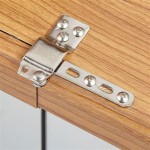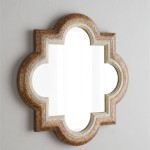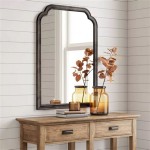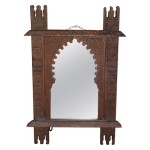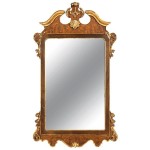Why Do Concave Mirrors Reflect Upside Down?
Concave mirrors, with their inwardly curving reflective surfaces, possess the intriguing ability to produce inverted, or upside-down, images. This phenomenon, far from being a mere optical quirk, stems from the fundamental laws of reflection and the specific geometry of the mirror's surface. Understanding how these factors interplay provides a clear explanation for the inverted images characteristic of concave mirrors.
The foundation of image formation in any reflecting surface lies in the law of reflection. This principle dictates that the angle of incidence, the angle at which a light ray strikes a surface, is always equal to the angle of reflection, the angle at which the ray bounces back. This law applies to every individual ray of light interacting with the mirror's surface. While seemingly simple, this principle, when applied across the curved surface of a concave mirror, leads to complex and fascinating image formation.
A concave mirror's curvature is crucial to its image-inverting properties. Unlike a flat mirror, which reflects light rays in parallel, a concave mirror's curved surface causes reflected rays to converge. This convergence occurs because the normal line, an imaginary line perpendicular to the mirror surface at the point of incidence, changes direction at each point along the curve. Consequently, rays striking the mirror at different points are reflected at different angles, leading them to converge at a focal point.
To visualize how an inverted image forms, consider an object placed beyond the center of curvature of a concave mirror. Light rays emanating from the top of the object strike the upper portion of the mirror. Due to the mirror's curvature and the law of reflection, these rays are reflected downwards, converging towards the focal point and beyond. Simultaneously, rays originating from the bottom of the object strike the lower portion of the mirror and reflect upwards, also converging towards the focal point.
The intersection of these reflected rays determines the location and orientation of the image. Because the rays originating from the top of the object are reflected downwards, and those from the bottom are reflected upwards, the resulting image is inverted. This inversion occurs because the reflected rays effectively cross over each other, creating an image where the top and bottom are reversed relative to the object.
The distance of the object from the mirror influences the characteristics of the resulting image. If an object is placed beyond the center of curvature, the image formed is real, inverted, and diminished. A real image is one that can be projected onto a screen, as the light rays physically converge at the image location. When the object is placed between the center of curvature and the focal point, the image remains real and inverted, but becomes magnified.
A unique scenario arises when the object is placed directly at the center of curvature. In this case, the reflected rays retrace their original path, resulting in an image that is real, inverted, and the same size as the object. This specific positioning highlights the precise relationship between the object's location and the characteristics of the resulting image.
An even more intriguing phenomenon occurs when the object is placed between the focal point and the mirror. In this situation, the reflected rays diverge, and the image formed is virtual, upright, and magnified. A virtual image cannot be projected onto a screen, as the light rays do not physically converge. Instead, the image appears to be located behind the mirror, and the divergence of the rays results in magnification.
The transition from an inverted to an upright image as the object moves closer to the mirror demonstrates the complex interplay between the object's position, the mirror's curvature, and the law of reflection. These principles govern the image formation process, determining the image's location, size, orientation, and whether it is real or virtual.
The inversion of images by concave mirrors is thus not a random occurrence, but a direct consequence of the law of reflection and the specific geometry of the reflecting surface. The curved nature of the mirror causes reflection angles to vary across its surface, leading to the convergence or divergence of reflected rays and the resulting formation of inverted or upright images, depending on the object's location relative to the mirror's focal point and center of curvature.
Concave mirrors and their image-forming properties find numerous practical applications. From reflecting telescopes that gather and focus distant starlight to shaving mirrors that provide magnified views, the ability of concave mirrors to manipulate light and form images is leveraged across various fields, making them essential optical components in many devices and instruments.
Why Do Magnifying Mirrors Turn Images Upside Down Quora
Objects In The Mirror Are Actually Images Article Khan Academy
Objects In The Mirror Are Actually Images Article Khan Academy
Why Do Some Mirrors Flip The Image Upside Down Quora

Concave Mirror Why Is Your Reflection Upside Down On A Spoon Aumsum Kids Science

Reflections
Why Do Some Mirrors Turn You Upside Down When Back Up Quora

Snc2p

Distorted Images In Curved Mirrors Stem Activity
Why Can We See Our Inverted Image Inside A Concave Mirror When The Is Formed In Front Of It And Not Behind Quora


